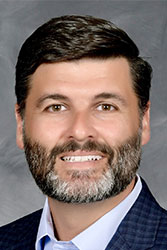Focal Passage: John 5:5-16
 Few difficulties in life are more dangerous than hopelessness. In 2020, Anne Case and Angus Deaton co-authored a book titled, Deaths of Despair and the Future of Capitalism, where they researched a unique rise in death rates among white, middled-aged, American men. While life expectancy had been on the rise through the 1900s, studies revealed a noticeable decline among men, ages 45-54, since 2000 — a decline exclusive to the United States.
Few difficulties in life are more dangerous than hopelessness. In 2020, Anne Case and Angus Deaton co-authored a book titled, Deaths of Despair and the Future of Capitalism, where they researched a unique rise in death rates among white, middled-aged, American men. While life expectancy had been on the rise through the 1900s, studies revealed a noticeable decline among men, ages 45-54, since 2000 — a decline exclusive to the United States.
In a nation overflowing with advanced healthcare, astonishing technology and accumulated wealth, what could possibly lead to an increase in the death rate? According to Case and Deaton, this unique group of men have been adversely affected by economic instability, lower education levels, joblessness, disintegrating families and other cultural maladies.
As a result of such pain and sorrow — along with the personal belief that it will never change — many of them have suffered from alcoholism, opioid addictions, drug overdoses, suicides and other fatal diseases related to poor health and lifestyle choices.
In essence, a sense of hopelessness has led these men to “deaths of despair.” And such despair isn’t unique to men. There are numerous women and adolescents — even in our churches — that struggle with the perceived reality that life will never change. However, hopelessness isn’t just a modern issue. In John 5, we find such an example in a lifelong paralytic that Jesus encountered by the pool called Bethesda.
Unlike pools today, which are used for relaxation and enjoyment, this pool was described by one writer as “a collection of human suffering.” It was surrounded by the blind, lame, deaf and diseased, all believing a local legend that angels would occasionally stir the water and bring healing to those who could get in. Like modern day panhandlers who position themselves in major traffic areas to receive coins, these disabled men and women had positioned themselves in an area where they thought they could receive healing, but virtually all of them had been there for many years with no success.
In a similar way, those who are hopeless today look for relief through every human remedy possible: wealth and materialism, popularity and status, personal beauty, entertainment, recreation, drugs and alcohol, sexual immorality, etc. Many believe the cultural lie that these are the means for long-term joy and fulfillment. However, like the paralytic who had been searching for 38 years, many today have come up short their whole lives.
But as the waters of the pool failed to produce, the paralytic was approached by Jesus and asked, “Do you want to be healed?” After explaining how his efforts to get in the water had been unsuccessful, Jesus said to him, “Get up, take up your bed and walk.” Then John specifically notes, “at once the man was healed.”
This instantaneous healing is a reminder that Jesus can provide in a moment what the world’s methods cannot deliver over a lifetime. However, it required the man to pick up his mat, which was a symbol of giving up on his own efforts to find healing another way.
When we are filled with despair and hopelessness, we must turn to Jesus for help. But it often requires us abandoning our own means for finding joy and peace and trusting in the One who heals hearts at once. Soli Deo Gloria! B&R

